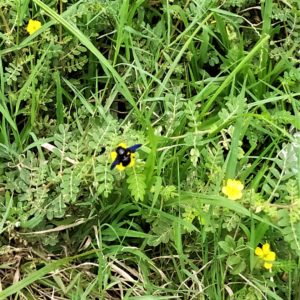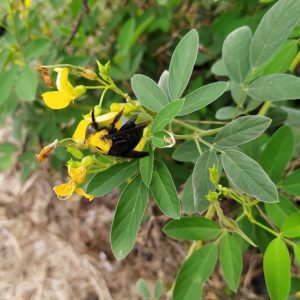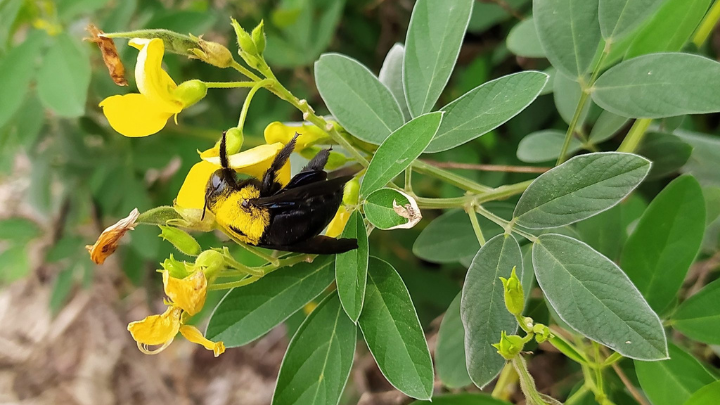Carpenter bees: Inevitable but neglected pollinator of Moringa (Moringa oleifera)
Evolving locally relevant strategies for its conservation
Native bees are widely recognized as important pollinators of a range of wild plants and crop species; these include carpenter bees. There are 375 (Michener, 2007) to 500 (Minckley, 1998) species of carpenter bees, from the genus Xylocopa. It is distributed worldwide but dominant in tropical and sub-tropical regions. It is proven fact that X. olivacea can increase the seed yields of cultivated legumes such as Phaseolus vulgaris, Pisum sativum, Vignaunguiculata, Cucumis melo, Momordica charantia and Cajanus cajan.

This blog describes the species of carpenter bees in Moringa (Moringa oleifera), in Tamil Nadu, India, its pollination behaviours including seasonality, and farmers awareness and knowledge on carpenter bees. We also propose appropriate local solutions for its conservation.
Moringa is one of the high value crops which depends on insect pollination, cultivated by the farmers of semi-arid region of Dindigul district (Western Ghats), South India. Moringa crops cover 13,250 hectares in the state of Tamil Nadu in India providing a net income of ~$4000 (USD) per hectare per annum. This crop attracts a wide suite of pollinators, including carpenter bees. Three major species of carpenter bees namely, Xylocopa latipes, X. pubescens (and X. ruficornis were recorded in the study area from February to November 2021 both during Kharif (June- September) and Rabi (October- November) seasons; however the peak activity was observed during Kharif. Interestingly, more male bees than females were observed during Kharif season in moringa. Among the three species, the majority of visits (248) were from X. Latipes. This species was active from 9.00 am to 6.00 pm, with peak activity observed between11.30 am to 3.30 pm. Apart from moringa, it was also observed on crops like Cajanus cajan, Tagetes erecta and wild species such as Solanum trilobatum, Tribulus terrestris, Pongamia glabra, and Calotropis sp.
Many moringa farmers call the carpenter bee as Karuvandu (Vernacular), and only few farmers were able to relate the carpenter bees activity and its benefits to crop yield and quality. The large majority of the farmers remain unaware of their role in pollination services. Mrs.Vasanthamary, a female farmer expressed that the productivity of moringa tree was higher in the presence of carpenter bee. Her anecdotal evidence although unverified suggested that number of pods per inflorescence were ~8-11 when carpenter bee activity was low, while it increased to around 11-15 pods when there was higher carpenter bee activity. However, due to lack of knowledge about the beneficial role of carpenter bees, farmers are not taking adequate precautions like the timing of insecticide sprays or avoiding of red labelled pesticides.. This was confirmed during the field survey, in which Mr. Manikandan and Mr. Ranjith observed more dead cadavers and paralyzed carpenter bees which confirmed the detrimental effects of chemical pesticide use.

So, how do we conserve and promote its activity in the moringa field while the farmers are adopting chemical-based pest control measures? It definitely needs a considered and collective approach: (i) increase awareness among the men and women farmers on the benefits of such pollinators, its pollination behaviour and its nesting habitats; (ii) promote good agronomic practices of including bund trees like Pongamia glabra, P. pinnata, Azadirachta indica, Vitex negundo etc on the bunds which will not only serve as attractants for the pollinators but also serve as local resource for preparing botanical extracts to manage insect pests of moringa; (iii) grow 2-3 dense rows of border crops such as redgram , intercrops – for e.g. marigold or sesame , which attract and provide floral resources for pollinators during moringa offseason when the main crop is not flowering; and (iv) augment the nesting habitats by keeping wooden logs and bamboo poles as nesting sites in the field margins. Implementing such conservation measures needs both on-farm and ecosystem based approaches for long term sustainability and a sustained partnership between researchers and farmer practitioners. Although it is relatively easy to enable individual farmers to adopt such ecological friendly practices, it is nevertheless challenging to promote collective action at the wider landscape level for the sustained impacts. This would definitely need concerted and coordinated action of local farmer’s associations and farmers group.
This blog was written by P. Manikandan and R.Ranjith, MSSRF, TROPICAL Project- funded by UoR
Michener CD (2007) The Bees of the World [2nd Edition]. Johns Hopkins University Press, Baltimore, xvi+[1]+ 953 pp. [20 pls].
Minckley RL (1998). A cladistic analysis and classification of the subgenera and genera of the large carpenter bees, tribe Xylocopini (Hymenoptera: Apidae).Scientific papers, Natural history museum, The University of Kansas, 35 pp.(https://archive.org/details/cladisticanalysi00minc)

